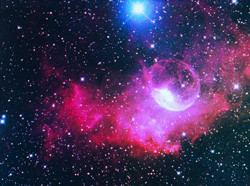Cryogenic space exploration missions
The temperature in outer space is as low as – 240 degrees Celsius in the orbit of Pluto, – 125 degrees Celsius on Mars, and – 50 degrees Celsius at an altitude of 570 km above Earth where the Hubble telescope currently is. At such low temperatures, conventional electronics are of no use. One idea proposed to enable the use of conventional electronics in space was the addition of a thermal source keeping the devices at a temperature higher than the surrounding one. Nevertheless, this seems impractical as more power would be needed to run the thermal sources. This would also make electronic devices heavy, bulky and complex. Within the EU-funded 'Cryogenic electronics for space applications and research' (CESAR)(opens in new window) project, researchers pioneered a technology called cryoelectronics. With higher thermal and electrical conductivity, lower operating power and better overall performance, cryoelectronics provides a better solution for outer space missions. Moderately cooled magnetometers (measuring magnetic fields) provide a very high sensitivity for space exploration. X-ray detectors can reach a spectral resolution two orders of magnitude better than silicon (Si) ones. In the infrared domain, observations with bolometers (measuring electromagnetic radiation) are limited only by the photon background of zodiacal light. The use of these new detectors based on cryoelectronics was hampered by the restricted availability of power. The power budget would be largely consumed for transporting recorded signals to distant warmer electronics for processing. CESAR researchers successfully undertook the challenge to design electronics to operate as close as possible to the detectors. Recognising that existing cryoelectronic components had yet to be proven and a how-to manual was not available, CESAR researchers tested off-the-shelf components. Specifically, transistors based on Si germanium proved to outperform conventional Si-based transistors operating at a temperature higher than 100 Kelvins. The next step was to determine how to create complex circuit designs using current complementary metal-oxide semiconductor technology that works at temperatures as low as 4 Kelvins. The cryoelectronic circuits improved the performance of the detectors because they control amplification and filtering of signals recorded as well as the conversion of digital signals into analogue, and vice versa. Further developments include miniaturisation, packaging possibilities and extended functionalities for cryoelectronics. The CESAR project demonstrated how trying to unlock the secrets of the Universe requires amazing engineering on Earth. The outcomes were shared through the project website and a series of workshops aiming to explore opportunities in medical diagnostics and superconducting magnetic energy storage systems.







